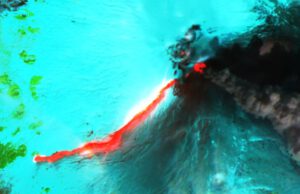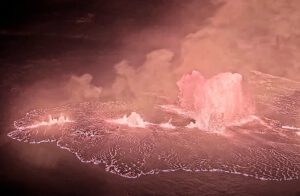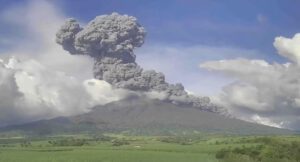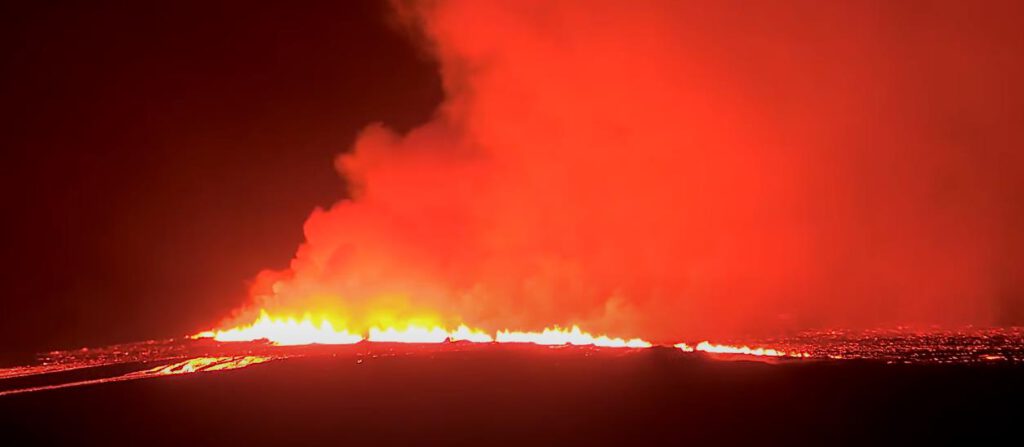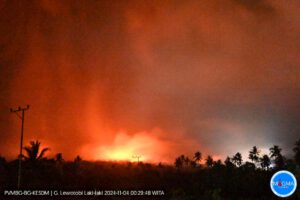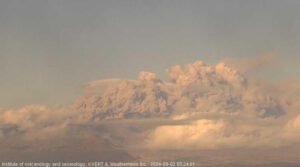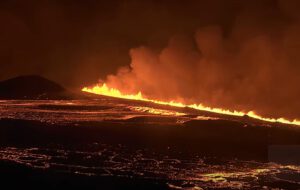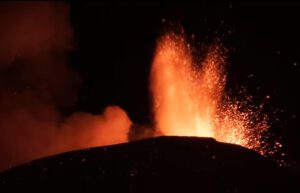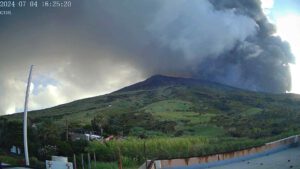Eruption and dyke formation at Sundhnúkur – Lava Flows Toward Grindavík
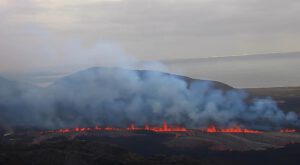 This morning at 9:47 a.m. local time (11:47 a.m. CEST), the anticipated volcanic eruption began on the Reykjanes Peninsula in Iceland. Once again, a fissure opened in the Sundhnúkur crater system—this time significantly farther south than in previous eruptions. The new fissure cuts through the protective barrier built north of Grindavík, and lava is now flowing toward the town.
This morning at 9:47 a.m. local time (11:47 a.m. CEST), the anticipated volcanic eruption began on the Reykjanes Peninsula in Iceland. Once again, a fissure opened in the Sundhnúkur crater system—this time significantly farther south than in previous eruptions. The new fissure cuts through the protective barrier built north of Grindavík, and lava is now flowing toward the town.
Unlike the eruptions in the latter half of 2024, today’s event was preceded by a powerful earthquake swarm. Interestingly, the Icelandic Meteorological Office (IMO) had yet to update its shakemaps early this morning, suggesting the new data was not incorporated until office hours began. However, Icelandic media outlet MBL reported early signs of a magma intrusion underground. Initial earthquake data did not reflect unusual activity, leading some to briefly suspect an April Fool’s hoax—proof that even a date can be deceiving.
But the eruption is very real. Live camera footage shows that a new fissure has opened south of the volcanic ridge of Hagafell. The fissure is estimated to be about 500 meters long, though the lava fountains are currently less intense than in previous eruptions. Given that the eruption began just over an hour ago, the event may still be in its early stages and could intensify. Further fissures are also a possibility.
Grindavík was evacuated immediately as the seismic crisis began this morning, though eight residents reportedly refused to leave. As of this writing, the fissure has extended dangerously close to a greenhouse near the town. However, the main fissure appears to be expanding northward—away from Grindavík. The nearby Svartsengi geothermal plant is currently not under direct threat. Lava is primarily spreading toward Mount Þorbjörn.
According to the IMO, the magmatic dike driving this eruption is over 11 kilometers long, making it the largest intrusion of its kind since November 2023. Scientists believe that this may be more than just a release of previously accumulated magma. The intensity of seismic activity suggests that fresh magma from greater depths may also be rising to the surface.
As the situation evolves, authorities are monitoring the eruption closely, ready to respond to any changes in the lava flow direction or eruption intensity.
